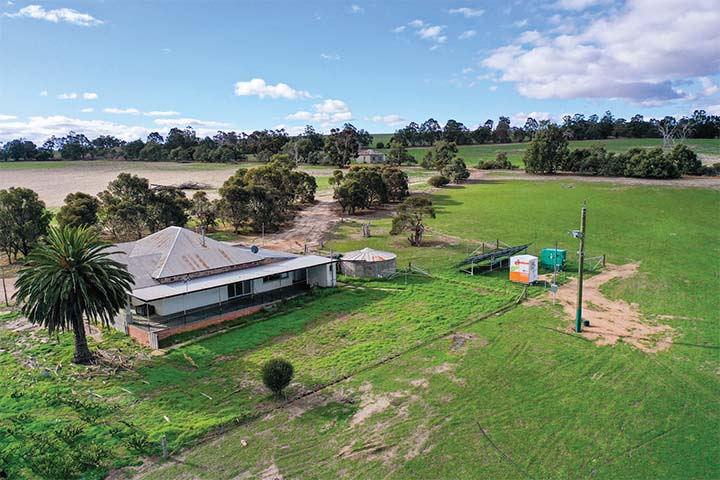by Lauren DeLorenzo, Journalist, Energy Magazine
In April 2021, Tropical Cyclone Seroja ripped a 1,000km trail of damage through Western Australia, leaving tens of thousands of residents and businesses without power. In an effort to restore power reliability, Western Power has accelerated a program to install stand-alone power systems (SPS) in the region.
The storm ravaged the town of Kalbarri, with an estimated 70 per cent of structures suffering severe damage. With an affected area as large as Tasmania, residents went days sheltering by candlelight, purchasing their own generator fuel and traveling long distances for hot showers.
Around 20 per cent of the region’s power network was damaged during the storm. In the immediate aftermath, 31,500 homes lost power in Kalbarri and neighbouring towns of Geraldton, Northampton, Dongara, Port Denison and Mullewa. One week later, 4,100 homes and businesses were still experiencing the outage, a result of over 4,000 power poles being down.
Instead of replacing the 260km of overhead powerlines from scratch, Western Power, a Western Australian Government owned corporation, will install SPS units in an effort to improve power reliability in the region.
The case for SPS
As self-sufficient electrical power systems which work independently from the grid, SPS units service a connection to a single structure, such as an agricultural farm, a household or a community building.
Western Power SPS Program Manager, Margot Hammond, said, ”These units combine solar and battery energy technology, and sometimes a backup generator, and generate and store electricity that can power a wide range of applications.
“The most common system being installed is between 15-20kWh per day, which would power a large working farm.” Regional and remote areas which use long rural lines stand to benefit the most from SPS installation, as the units are self-sufficient.
This makes them less vulnerable to extreme weather events such as cyclones or bushfires, as reliability issues are localised rather than reliant on a much larger network.
Western Power began trialling SPS in 2016, and installed six units in regional WA. An additional 52 units were installed following their success, and were built in WA’s Great Southern and Mid West regions. The Wooroloo bushfire in February 2021 prompted two more units to be installed in the Perth Hills.
Resilience when it’s needed most
Tropical Cyclone Seroja made landfall in April 2021, shortly before the planned rollout of SPS units in the region. Ms. Hammond said, “While the impact was severe, the cyclone provided us with important insight into the resilience of SPS.
“Six existing SPS customers in the Mullewa region retained power during the extreme weather event, prompting us to consider how we could upgrade and strengthen the network to provide improved power supply for regional communities as well as save on network investment.
“When evaluating SPS suitability, we look at the age, condition, location and customer numbers on lines due for renewal to assess the line’s economic viability. As we’re regulated, we need to ensure the most prudent option is progressed.”
Once suitable sites have been identified, Western Power works with residents to determine their suitability for SPS installation. “This means understanding how they use power, including seasonal requirements such as shearing, the type of equipment used on site, transient workers living on site for periods of time, and property extensions such as the installation of new sheds or cool rooms,” Ms Hammond said.
Prioritising the severely-impacted
After re-assessing the power supply needs of the region, Western Power has selected 41 properties in the Mid West and Wheatbelt region to have SPS installed.
These areas were severely impacted by the cyclone, and were the most suitable for SPS units due to their remote geography, power reliability and the costs associated with installation compared with repairing their local network infrastructure.
Ms Hammond said, “Four of the 41 units had been previously identified as part of our rollout for 2021-2022 and will have their installation brought forward, with the remaining 37 being newly identified sites. Generators have been provided for customers who will receive an SPS until their units can be installed.
“As we continue our rollout of the project, a further 98 units are due to be installed in the second half of 2021 and early 2022 in regional WA, including in the Mid West region of WA.”
Western Power will be in charge of funding and managing the project, and will hire contractors to design, install and commission the systems.
The supply of power for the SPS rollout will rely on an east coast company with a WA subcontractor. The manufacturing, installation and commissioning of the SPS units in the cyclone recovery area will be done by Hybrid Systems, BayWA R.E. Solar Systems and BalanceCD SPS.

SPS are set to play a major role in shoring up power supply as Western Australia recovers from the COVID-19 pandemic and Tropical Cyclone Seroja. Image by Western Power
Off to a great start
“We’re very optimistic about the benefits the SPS will bring to the community,” Ms Hammond said. “From the 2016 trial, SPS have proven to be around 15 times more reliable and safer than poles and wires in regional areas, and require less maintenance, and can reduce or avoid outages.
“With more than 200 hours of outages being avoided, our SPS customers in the Great Southern have experienced a substantial improvement in reliability as well as reductions in the average time of outages.
“The units have derived 90 per cent of their total energy used from solar power, and existing customers rated their SPS experience at 9.9 out of 10 for satisfaction and use of renewable energy.”
The Western Australian Government plans to deploy 1,000 SPS units over the next four years. In the coming decade, Western Power is planning the installation of approximately 4,000 units.
This will allow for the decommissioning of over 23,000km of overhead assets, and help avoid millions of dollars of traditional network build costs. The installations aim to provide a more reliable and stable energy infrastructure to remote communities.

















